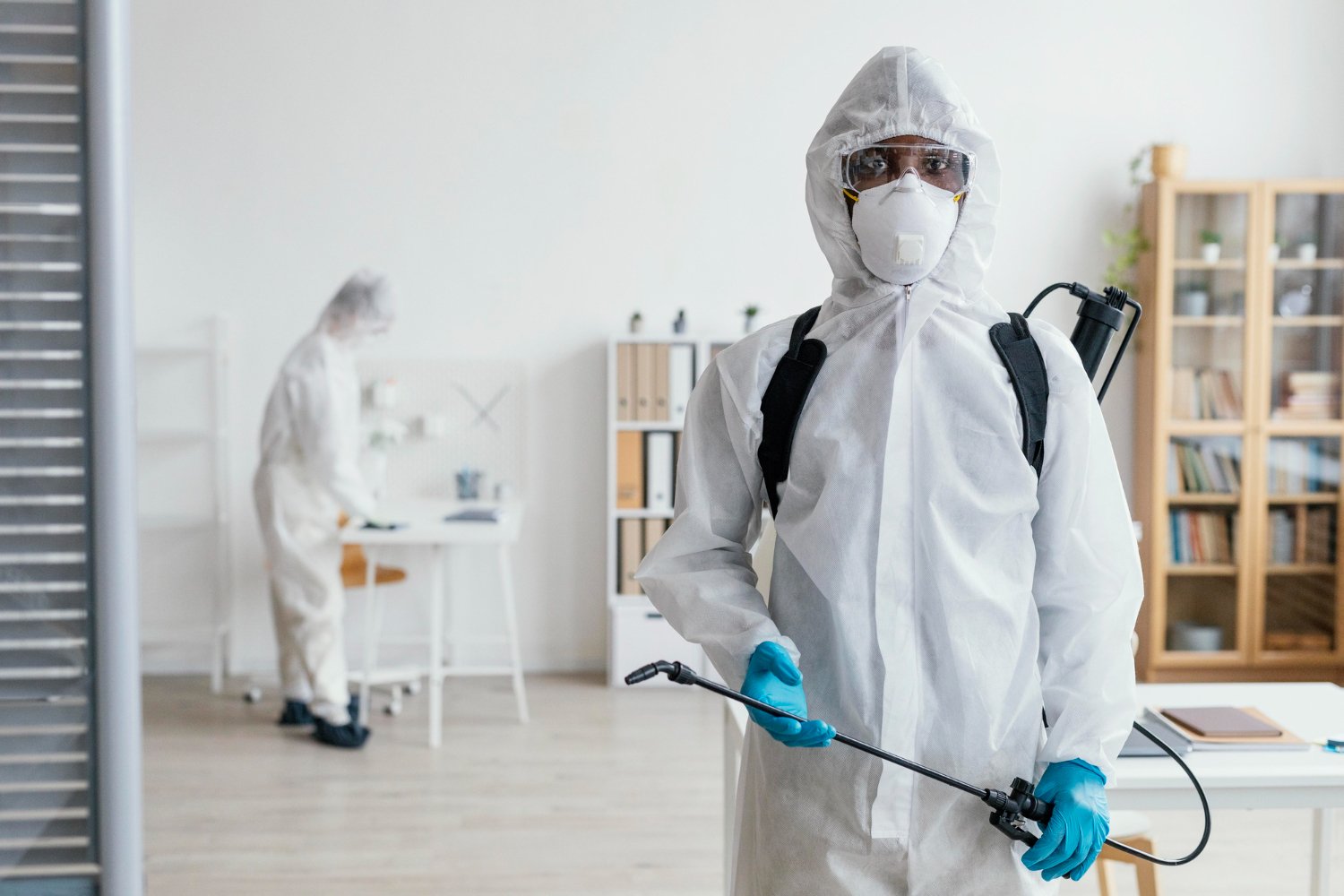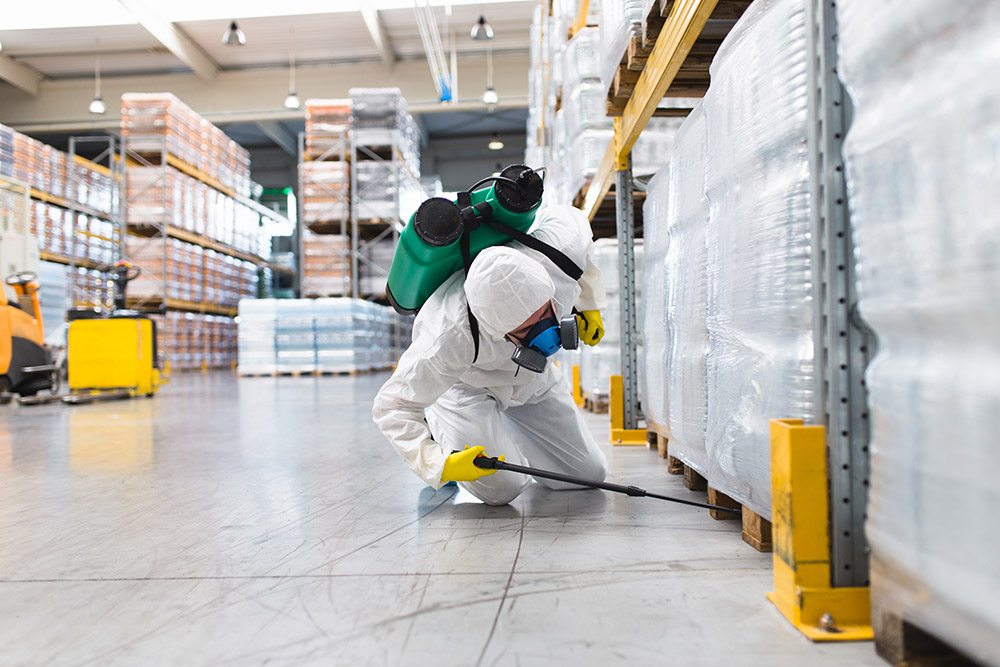Budget Friendly Pest Control Auckland Experts: Keep Your Residential Property Safe
Budget Friendly Pest Control Auckland Experts: Keep Your Residential Property Safe
Blog Article
Understanding Different Types of Parasite Control Techniques and Their Performance
The management of insects is an essential element of preserving the health and wellness and integrity of various atmospheres, from agricultural areas to household homes. When taking into consideration insect control methods, it is vital to understand the diverse approaches readily available and their differing degrees of efficiency. From chemical treatments to organic options, each method presents distinct advantages and constraints. By discovering the nuances of these bug control methods, a detailed understanding of exactly how to attend to insect issues can be developed.
Chemical Pest Control Approaches
Chemical pest control techniques play an essential function in effectively handling and removing pest problems in different settings. One of the key benefits of chemical pest control is its ability to provide fast and targeted options to pest problems. Pest Control Auckland.
Nonetheless, it is important to consider the potential dangers and drawbacks associated with chemical insect control methods. Overreliance on chemicals can lead to the growth of chemical resistance in insects, making them more difficult to control in the future. In addition, using certain chemicals can have harmful results on non-target microorganisms, the environment, and human wellness if not applied appropriately.

Organic Parasite Control Techniques
Making use of natural killers and pathogens to manage pest populations efficiently, organic bug control techniques supply a eco-friendly and lasting strategy to pest administration. By advertising the activity or introducing of microorganisms that normally prey on or contaminate pests, such as ladybugs for aphid control or specific bacteria for caterpillar invasions, organic control can aid preserve parasite populaces at convenient degrees without the demand for synthetic chemicals. This method is especially useful for organic farming methods, as it prevents using potentially damaging substances while preserving plant health and wellness.

Physical Parasite Control Approaches
While organic parasite control approaches concentrate on using all-natural predators and virus, physical parasite control approaches use mechanical and physical barriers to handle insect populations. These methods are often taken into consideration ecologically friendly as they decrease making use of chemicals. Physical insect control includes techniques such as trapping, making use of obstacles like screens or webs, and literally getting rid of insects from the area.
Traps are commonly made use of in physical insect control to record and get rid of bugs like insects and rodents. These catches can be baited with food or pheromones to bring in the pests, leading them to a had area where they can be quickly gotten rid of. One more physical technique is using obstacles such as displays, fences, or internet to stop pests from going into or infesting particular areas. For instance, installing fine mesh screens on home windows can aid stay out flies and mosquitoes.
All-natural Pest Control Methods
Incorporating natural predators and plant-based repellents is a key strategy in carrying out efficient natural insect control techniques. By additional hints motivating the existence of helpful pests like ladybugs, lacewings, or predatory termites, garden enthusiasts can normally manage pest populations. These predators feed on usual garden insects such as mites, caterpillars, and aphids, aiding to keep a balanced community without the need for chemical interventions.

Additionally, applying cultural techniques such as crop turning, buddy growing, and preserving proper plant health and wellness can also boost the effectiveness of all-natural pest control approaches. These techniques not just help in protecting against insect problems however additionally promote biodiversity and overall community resilience. By integrating these all-natural strategies, people can effectively manage parasites while minimizing environmental impact.
Integrated Bug Management (IPM) Technique
Implementing an Integrated Insect Monitoring (IPM) strategy is essential for properly controlling parasite populaces while minimizing reliance on chemical pesticides. IPM is a lasting and comprehensive technique that incorporates various bug control approaches to attain long-term services. This click method concentrates on avoidance, surveillance, and control to deal with pest problems in an ecologically pleasant manner.
IPM integrates biological, cultural, physical, and mechanical strategies with the critical and minimal use pesticides when needed. By emphasizing proactive measures such as habitat modification, organic control, and exemption, IPM intends to minimize bug populations and their effect on the environment. Routine surveillance is essential in IPM to evaluate bug levels precisely and identify the most ideal control approaches.
Among the crucial advantages of IPM is its ability to decrease the threats connected with extreme pesticide usage, such as ecological contamination and injury to non-target microorganisms. Furthermore, IPM promotes an extra alternative method to pest management by taking into consideration the general community characteristics. Generally, the IPM technique provides a effective and lasting option for pest control while advertising environmental responsibility.
Final Thought
In conclusion, recognizing the different kinds of bug control methods and their efficiency is essential in properly handling pest invasions. Chemical, organic, physical, and natural parasite control techniques each have their very own advantages and constraints. Integrated Insect Monitoring (IPM) method, which incorporates various techniques for lasting insect control, is increasingly being acknowledged as a ecologically friendly and alternative solution. By using a mix of these approaches, organizations and individuals can efficiently manage parasites while minimizing injury to the environment.
Chemical insect control techniques play a critical function in successfully handling and getting rid of pest problems in numerous atmospheres.Using natural predators and pathogens to take care of parasite populaces successfully, biological insect control techniques provide a environmentally friendly and sustainable approach to pest monitoring. By presenting or promoting the activity of microorganisms that normally prey on or infect pests, such as ladybugs for aphid control or particular germs for caterpillar invasions, organic control can image source aid preserve pest populaces at workable levels without the demand for synthetic chemicals.While organic bug control methods concentrate on taking advantage of natural killers and microorganisms, physical pest control approaches use mechanical and physical obstacles to handle pest populaces. Integrated Pest Monitoring (IPM) method, which combines different methods for lasting pest control, is significantly being identified as a holistic and ecologically friendly service.
Report this page